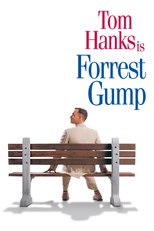 Forrest Gump
(1994)
Forrest Gump
(1994)
Academy Award for Best Director (Robert Zemeckis)
Academy Award for Best Film Editing (Arthur Schmidt)
Academy Award for Best Picture (Wendy Finerman, Steve Tisch)
Academy Award for Best Visual Effects
Academy Award for Best Writing, Adapted Screenplay (Eric Roth)
Amanda Award for Best Foreign Feature Film
National Film RegistryAward nominations: Academy Award for Best Cinematography (Don Burgess)
Academy Award for Best Makeup and Hairstyling (Daniel C. Striepeke, Hallie D'Amore)
Academy Award for Best Original Score (Alan Silvestri)
Academy Award for Best Production Design (Rick Carter)
Academy Award for Best Sound Editing
Academy Award for Best Sound Mixing
Academy Award for Best Supporting Actor (Gary Sinise)Award details: (details at IMDb)
Below are links to reviews and further info from selected film sites. Links surrounded by a solid border lead directly to a page about this movie on that site. Links surrounded by a dashed border lead to a Google search for this exact movie title on that site. You may find it more efficient to open these links in separate browser tabs. Click Show More / All / Default to see more available links or return to the standard default selection. More (or fewer) choices of links can be selected via Options, and you can save your personal defaults (requires login).
Forrest Gump is a 1994 American epic romantic-comedy-drama film based on the 1986 novel of the same name by Winston Groom. The film was directed by Robert Zemeckis and starred Tom Hanks, Robin Wright, Gary Sinise, Mykelti Williamson, and Sally Field. The story depicts several decades in the life of Forrest Gump, a slow-witted and naïve, but good-hearted and athletically prodigious, man from Alabama who witnesses, and in some cases influences, some of the defining events of the latter half of the 20th century in the United States; more specifically, the period between Forrest's birth in 1944 and 1982. The film differs substantially from Winston Groom's novel on which it was based, including Gump's personality and several events that were depicted. Principal photography took place in late 1993, mainly in Georgia, North Carolina, and South Carolina. Extensive visual effects were used to incorporate the protagonist into archived footage and to develop other scenes. A comprehensive soundtrack was featured in the film, using music intended to pinpoint specific time periods portrayed on screen.
